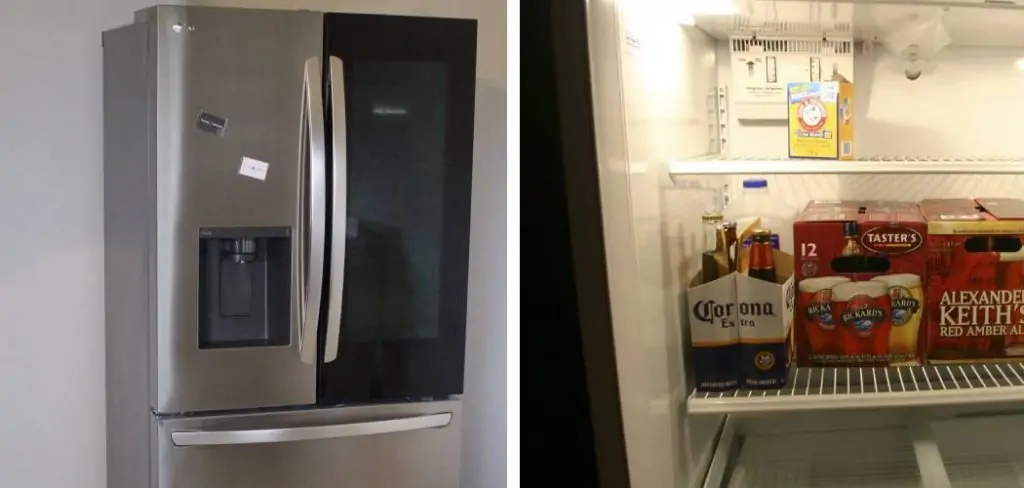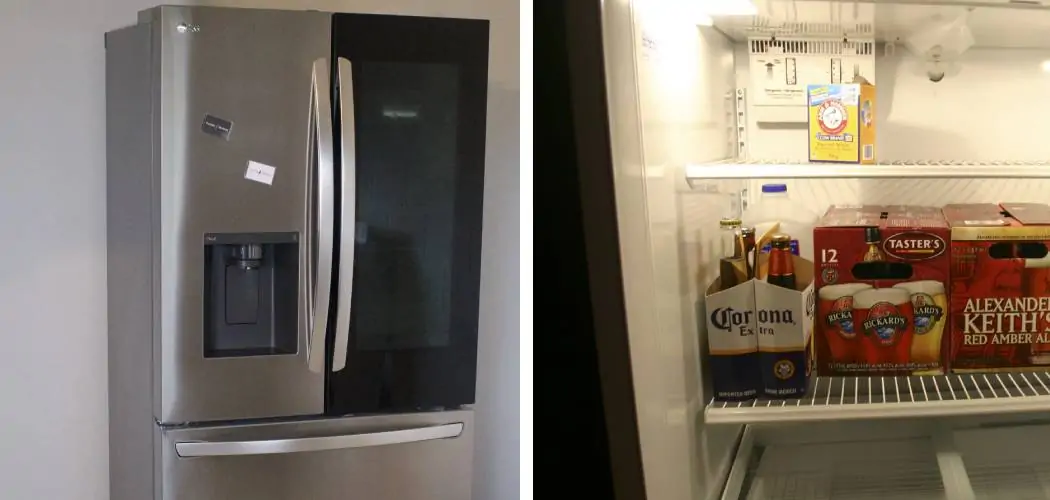Moving a KitchenAid refrigerator may seem like a daunting task due to its size and weight. However, with proper planning, safety measures, and a bit of effort, it can be accomplished smoothly. This guide will provide you with step-by-step instructions to ensure you can relocate your appliance effectively and without causing any damage. Understanding how to move kitchenaid refrigerator can save you unnecessary costs and potential accidents that could occur during the process. So, let’s get started!

Preparations Before Moving
Before you start moving your KitchenAid refrigerator, you need to take a few preparatory steps. These include:
- Emptying the Refrigerator: The first step is to empty all the contents from the fridge and freezer compartments. Dispose of any perishable items or transfer them to a cooler for temporary storage.
- Cleaning the Interior: Once empty, clean the interior of your refrigerator thoroughly with warm soapy water and dry it using a soft cloth or towel.
- Removing Shelves and Drawers: Remove all shelves, drawers, and any other detachable parts from the fridge to lighten its load and prevent any damage during transport.
- Defrosting: If your refrigerator has a built-in freezer, make sure to defrost it beforehand. This will prevent any water leakage during transportation.
- Disconnecting the Water Line: If your KitchenAid refrigerator has an ice maker or water dispenser, be sure to turn off the water supply and disconnect the line before moving.
Step-by-step Instructions on How to Move Kitchenaid Refrigerator
Once you have completed all the preparations, it’s time to start moving your KitchenAid refrigerator. Here are some helpful tips to keep in mind:
Step 1: Empty the Refrigerator
As obvious as it may seem, it can’t be stressed enough how important it is to ensure that your refrigerator is empty. Not only will this make the fridge lighter and easier to handle, but it will also prevent any items from falling out or getting damaged during the move. Be meticulous about this step to avoid any unnecessary surprises or mishaps.

Step 2: Secure the Doors and Shelves
It’s essential to secure the doors of your KitchenAid refrigerator before moving it. This can be done using strong adhesive tape or ropes. Ensure that the tape doesn’t come into contact with the refrigerator’s surface to prevent any potential damage or residue. For the interior, any loose shelves should be secured to prevent them from moving or falling during the transportation process. You can use tape to keep them in place, but ensure it’s easy to remove once you’ve relocated the fridge. These simple steps can vastly reduce the risk of damage during relocation.
Step 3: Measure Doorways and Pathways
Before the move, having the exact dimensions of your refrigerator and the doorways and pathways it needs to pass through is critical. Use a tape measure to get the width, height, and depth of your fridge, and remember to include the handles and any other protuberances. Also, measure the width and height of any doorways, hallways, or stairwells the fridge will pass through. Compare these dimensions to ensure the fridge will fit without getting stuck. In case of tight fits, you may need to temporarily remove the doors of the fridge or even the doors of your house. Taking these precautions can prevent potential damage to both your refrigerator and your home during the moving process.
Step 4: Use a Dolly
Using a sturdy dolly is crucial when moving heavy appliances like refrigerators. A dolly, also known as a hand truck, will help you transport your KitchenAid refrigerator with ease. Make sure the dolly you choose is robust and can handle the weight of the refrigerator. Most importantly, it should have straps for securing the fridge in place. Once the refrigerator is on the dolly, fasten the straps firmly to ensure the fridge won’t shift or fall over during transit. Remember, safety is paramount. This simple tool can immensely reduce the strain and potential risk involved in moving such a large appliance.

Step 5: Lift From the Bottom
When lifting the refrigerator for relocation, always ensure to lift from the bottom rather than pulling on the handles or doors. This method aids in evenly distributing the weight of the appliance, reducing the strain on any one part and minimizing the risk of damaging the handles or doors. Remember, these parts are not designed to withstand the full weight of the refrigerator and could easily break or bend if misused. By employing proper lifting techniques, you can safeguard your KitchenAid refrigerator from any potential damage during the moving process.
Step 6: Have Someone Assist You
Moving a KitchenAid refrigerator is certainly not a one-person job. It’s highly recommended to have at least one other person assist you in lifting and maneuvering the fridge. This not only makes the task less strenuous but also significantly safer. By having an extra pair of hands, you can ensure better control over the appliance during the move, preventing any potential accidents or damages. Moreover, if there are stairs or tight spaces involved in the moving process, having an assistant is crucial. Remember, safety should always be your topmost priority when moving heavy appliances like a refrigerator.
Step 7: Take Breaks if Needed
Moving a refrigerator is physically demanding, so don’t hesitate to take breaks if needed. This is not a race—your safety and the care of your appliance are far more important. Periodic rests will prevent overexertion, reducing the risk of injury and providing an opportunity to regain strength. During these breaks, ensure the refrigerator is secure and won’t roll or shift. Once you’re ready, you can continue cautiously with the move. Remember, your well-being is paramount, and a successful relocation of your KitchenAid refrigerator requires patience and careful handling.

Step 8: Be Cautious When Going Up or Down Stairs
When maneuvering the refrigerator up or down stairs, it’s crucial to do so with care and deliberation. Extra caution should be employed when descending stairs, as gravity can make the fridge significantly heavier. It’s advisable to have a helper on the lower level who can guide the refrigerator and control its descent, while the person on the higher level balances and guides from above. Making use of the dolly’s stair climber, if available, can also ease the process. Remember, haste can lead to accidents. It’s better to move slowly and steadily, ensuring the safe transportation of your KitchenAid refrigerator to its new location.
Step 9: Place on a Flat Surface
Once you’ve successfully moved your KitchenAid refrigerator, make sure to place it on a flat surface in its designated spot. This will ensure that it is stable and will prevent any accidents or damage. Check the floor for level using a spirit level; if any variations are observed, they can be corrected using adjustable feet or shims. An uneven surface can lead to poor operation and potential issues with the fridge’s performance. Additionally, ensure there’s adequate space around the refrigerator for ventilation, as this is crucial for its efficient functioning. Taking time to properly position your refrigerator will contribute significantly to its longevity and optimal performance.
Step 10: Allow Fridge to Settle
After the physical task of moving is complete, it’s crucial to let your KitchenAid refrigerator settle for at least an hour before plugging it back in. This wait time allows the oils and refrigerants within the cooling system to settle back into place after the turmoil of the move. Plugging in the fridge too soon could lead to potential damage to the cooling system. Moreover, this short break gives the fridge time to adjust to its new environment, particularly if there are significant changes in temperature or humidity from its previous location. Taking this precaution ensures the smooth operation and longevity of your KitchenAid refrigerator in its new home.

Frequently Ask Questions
Q: How Do I Transport a Kitchenaid Refrigerator?
A: To transport a KitchenAid refrigerator, you should first empty and clean the inside of the fridge. Then, secure any loose parts or shelves and disconnect the power. Use a dolly to move the refrigerator and have someone assist you in lifting and maneuvering it. Take breaks if needed, be cautious when going up or down stairs, and place the fridge on a flat surface once moved. Allow the fridge to settle for at least an hour before plugging it back in.
Remember to always prioritize safety when moving heavy appliances like a refrigerator.
Q: Can I Transport a Kitchenaid Refrigerator on Its Side?
A: It is not recommended to transport a KitchenAid refrigerator on its side, as this can damage the fridge’s cooling system and potentially lead to issues with its performance. If necessary, it should be transported upright and allowed to settle for at least an hour before plugging it back in. Remember to always prioritize safety when moving a refrigerator and consult the manufacturer’s guidelines for specific recommendations.
Q: Do I Need a Professional to Move My Kitchenaid Refrigerator?
A: It is not necessary to hire a professional to move your KitchenAid refrigerator, but it is highly recommended. Moving a refrigerator is a physically demanding task and can also be risky if not done correctly. Having professional movers handle the job ensures the safety of both yourself and your appliance. However, if you choose to move it yourself, make sure to follow proper lifting techniques and take necessary precautions.
Remember, hiring professionals may also come with additional insurance coverage for any potential damages during the moving process. Overall, it’s important to consider your abilities and the potential risks before deciding whether or not to hire professionals for the job.

Conclusion
In conclusion, following these step-by-step instructions on how to move Kitchenaid refrigerator will ensure a smooth and successful relocation process. From unplugging and defrosting the fridge to safely transporting it to its new location, taking the time to properly prepare and handle your appliance will save you from potential damages and headaches. Additionally, don’t forget to utilize proper moving equipment and have a team of helpers for added support!
Now that you know the ins and outs of relocating your Kitchenaid refrigerator, you can confidently tackle this task whenever needed. Whether you’re moving houses or simply rearranging furniture, these tips will come in handy. Don’t let a bulky appliance hold you back from creating your dream kitchen layout or settling into a new home with ease. So go ahead and put these methods into practice – your Kitchenaid refrigerator (and back) will thank you!

